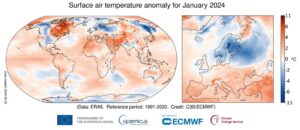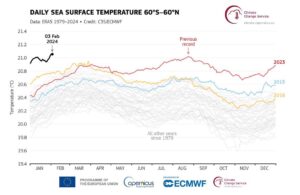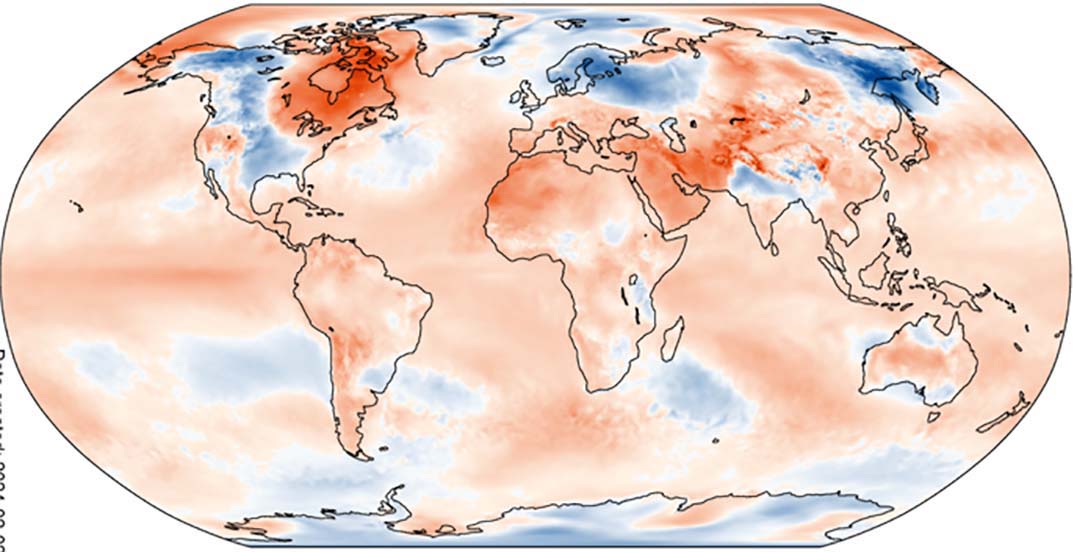January 2024 was the warmest January on record globally, with an average ERA5 surface air temperature of 13,14°C – that’s 0,7°C above the 1991-2020 average for January and 0,12°C above the temperature of the previous warmest January, in 2020.
This is according to Copernicus Climate Change Service (C3S), implemented by the European Centre for Medium-Range Weather Forecasts on behalf of the European Commission with funding from the EU, which found January 2024 was the eighth month in a row that is the warmest on record for the respective month of the year.
The global temperature anomaly for January 2024 was lower than those of the last six months of 2023, but higher than any before July 2023. The month was 1,66°C warmer than an estimate of the January average for 1850-1900, the designated pre-industrial reference period.
 Meanwhile, the global mean temperature for the past 12 months (Feb 2023 to Jan 2024) is the highest on record, at 0,64°C above the 1991-2020 average and 1,52°C above the 1850-1900 pre-industrial average.
Meanwhile, the global mean temperature for the past 12 months (Feb 2023 to Jan 2024) is the highest on record, at 0,64°C above the 1991-2020 average and 1,52°C above the 1850-1900 pre-industrial average.
European temperatures varied in January 2024 from much below the 1991-2020 average over the Nordic countries to much above average over the south of the continent.
Outside Europe, temperatures were well above average over eastern Canada, north-western Africa, the Middle East and central Asia, and below average over western Canada, the central US and most of eastern Siberia.
El Niño began to weaken in the equatorial Pacific, but marine air temperatures in general remained at an unusually high level. The average global sea surface temperature (SST) for January over 60°S–60°N reached 20,97°C – a record for January and 0,26°C warmer than the previous warmest January (2016) and second highest value for any month in the ERA5 dataset, within 0,01°C of the record from August 2023 (20,98°C).
The above-average temperatures are still ongoing: since 31 January, the daily SST for 60°S–60°N has reached new absolute records, surpassing the previous highest values from 23 and 24 August 2023.

Daily sea surface temperature (°C) averaged over the extra-polar global ocean (60°S–60°N) for 2015 (blue), 2016 (yellow), 2023 (red), and 2024 (black line). All other years between 1979 and 2022 are shown with grey lines.
Data source: ERA5. Credit: Copernicus Climate Change Service/ECMWF.
According to Samantha Burgess, deputy director of the Copernicus Climate Change Service (C3S): “2024 starts with another record-breaking month – not only is it the warmest January on record but we have also just experienced a 12-month period of more than 1,5°C above the pre-industrial reference period.
“Rapid reductions in greenhouse gas emissions are the only way to stop global temperatures increasing.”

